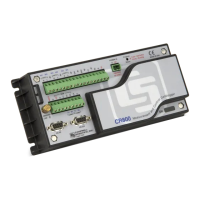Section 8. Operation
272
is reduced to ±2.5 Vdc, whereas input limits are always ±5 Vdc. Hence for non-
negligible DIFF signals, "input limits" is more descriptive than "common-mode
range."
Note Two sets of numbers indicate analog channel assignments. When
differential channels are identified, analog channels are numbered 1 - 3. Each
differential channel has two inputs: high (H) and low (L). Single-ended channels
are identified by the number set 1-6.
Caution Sustained voltages in excess of ±8.6 V input to the analog input
channels can temporarily corrupt all analog measurements.
Warning Sustained voltages in excess of ±16 V input to the analog channels will
damage CR800 circuitry.
8.1.2.2 Reducing Error
Read More! Consult the following white papers at www.campbellsci.com for in-
depth treatment of the advantages of differential and single-ended measurements:
Preventing and Attacking Measurement Noise Problems, Benefits of Input
Reversal and Excitation Reversal for Voltage Measurements, and Voltage
Measurement Accuracy, Self-Calibration, and Ratiometric Measurements.
Deciding whether a differential or single-ended measurement is appropriate for a
particular sensor requires sorting through trade-offs of accuracy and precision,
available measurement hardware, and fiscal constraints.
In broad terms, analog voltage is best measured differentially because these
measurements include noise reduction features, listed below, that are not included
in single-ended measurements.
• Passive Noise Rejection
o No voltage reference offset
o Common-mode noise rejection
Rejects capacitively coupled noise
• Active Noise Rejection
o Input reversal
Review Input and Excitation Reversal
(p. 278) for details
Doubles input reversal signal integration time
Reasons for using single-ended measurements, however, include:
• Sensor is not designed for differential measurement.
• Sensor number exceeds available differential channels.
Sensors with a high signal-to-noise ratio, such as a relative-humidity sensor with a
full-scale output of 0 to 1000 mV, can normally be measured single-ended
without a significant reduction in accuracy or precision.

